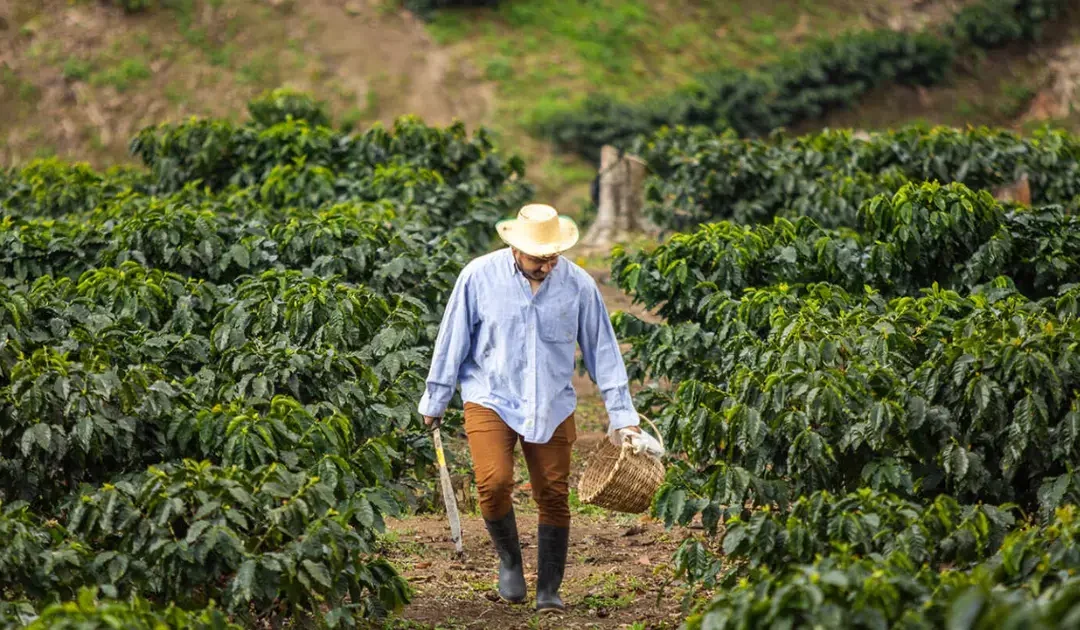Discover how export-grade beans are grown, tested, processed, and marketed — and what it means for your health and your business.
Export quality coffee isn’t just a luxury — it’s the gold standard of bean excellence. Behind every bag lies a story of precision farming, careful grading, health-safe handling, and market savvy. This guide dives deep into how export-quality coffee is produced, why it matters, and how it can boost both well-being and business success.
The Journey from Farm to Export Standard
The journey of export-quality coffee begins long before roasting — on the farm itself.
Most export-grade beans come from Coffea arabica, cherished for its complex flavor and aroma. While Coffea canephora (robusta) is tougher and higher yielding, arabica dominates global specialty markets because of its refined taste profile.
Growing export-quality coffee requires altitude (1,000–2,000 meters), fertile volcanic soils, and stable temperatures between 18–23°C. Shade-grown systems are common, as documented by Wikipedia’s Coffee Production page, since slower cherry maturation at altitude enhances bean density and sweetness.
Selective hand-picking ensures only ripe red cherries are harvested — a cornerstone of export standards. Overripe or green cherries introduce defects that lower the cupping score.
Processing methods define flavor clarity and cleanliness. The washed process, where mucilage is removed by fermentation and rinsing, yields bright, clean cups suited for export. Alternatively, natural and honey processes produce fruitier profiles prized in niche markets.
After pulping and washing, beans must be dried to 10–12% moisture — ideally on raised beds for airflow and contamination control. Export quality coffee never dries directly on the soil.
Once dried, beans undergo hulling, grading, and optical sorting. Precision equipment separates by size, weight, and color, while human inspectors remove visual defects.
Quality Benchmarks, Grading Systems, and Certification
The world of export-quality coffee runs on numbers, sensory science, and trust.
Cupping scores set the first benchmark. According to SCA protocols, coffees are graded on aroma, flavor, aftertaste, acidity, body, balance, sweetness, and uniformity. Beans scoring 80–84.99 are “Very Good,” 85–89.99 are “Excellent,” and 90+ are “Outstanding.”
Physical grading follows — checking bean size, shape, density, color, and defect count. Export quality coffee usually allows fewer than five defects per 350-gram sample. Anything above that risks rejection.
Beyond grading, certifications reinforce credibility:
- Fairtrade International — guarantees ethical pricing and community reinvestment.
- Rainforest Alliance — ensures eco-friendly and socially responsible production.
- Organic certification — prohibits synthetic fertilizers and chemicals.
- Geographical Indication (GI) — links flavor and identity to origin (e.g., Colombian Supremo, Ethiopian Yirgacheffe).
Top-tier lots often compete in the Cup of Excellence — a global auction program spotlighting exceptional microlots that can fetch several times the commodity price.
For export approval, coffee must also meet safety and trade compliance:
- Mycotoxin limits set by the World Health Organization (WHO)
- Residue controls under Codex Alimentarius
- Export documentation aligned with the International Coffee Organization (ICO) regulations
Traceability systems — often blockchain-based — track coffee from farm to buyer, confirming authenticity.
When every box is ticked, the beans truly earn the mark of export quality coffee — ready for global markets and consumer confidence.
Finally, beans are cupped by certified Q-graders following Specialty Coffee Association (SCA) standards. Only lots scoring 80 points or higher out of 100 earn the title of export quality coffee.
The result is a product defined by discipline — not luck. From soil to shipping container, every step is engineered for purity, flavor, and consistency.
Health Advantages and Nutritional Outlook
The health appeal of export-quality coffee extends far beyond flavor.
According to Wikipedia – Coffee Health Effects, coffee is one of the richest dietary sources of antioxidants, including chlorogenic acids and polyphenols. These compounds help neutralize free radicals and may reduce the risk of chronic conditions such as diabetes and cardiovascular disease.
Export quality coffee enhances those benefits because it’s grown, processed, and stored to prevent contamination. Proper drying and storage control prevent fungal growth that could lead to ochratoxin A, a harmful mycotoxin. The WHO emphasizes limiting mycotoxin exposure — something specialty exporters rigorously manage.
Moreover, export-grade beans are roasted evenly, ensuring stability of antioxidants while minimizing acrylamide formation (a compound produced by over-roasting).
High-grade coffee’s purity also benefits digestion and metabolism. Low defect counts mean fewer broken or fermented beans, resulting in smoother brews with less bitterness and acidity — easier on sensitive stomachs.
Moderate consumption (2–4 cups daily) of quality coffee, as cited by the National Institutes of Health (NIH), is linked to improved cognitive performance and reduced Parkinson’s disease risk.
When it comes to health, export quality coffee represents peace of mind — clean, safe, antioxidant-rich, and traceable from seed to sip.
Market Dynamics, Margins, and Export Challenges
Behind the aroma of export-quality coffee lies a volatile global market.
Coffee is the second most traded commodity in the world after oil, according to the International Coffee Organization. Top producers include Brazil, Vietnam, Colombia, Indonesia, and Ethiopia.
Export quality coffee commands a premium, but that premium is earned through cost-intensive steps — certification fees, quality control, logistics, and compliance. Producers often join cooperatives to pool resources, share equipment, and secure better bargaining power with exporters.
Market prices fluctuate due to climate variability, pests (like coffee leaf rust), and currency shifts. The Economics of Coffee explains how smallholder farmers remain vulnerable to these swings.
To sustain profitability, exporters increasingly adopt direct trade models — selling straight to roasters to bypass intermediaries. This not only raises margins but also builds transparency and trust.
Yet export hurdles remain:
- Shipping delays can cause moisture reabsorption and flavor degradation.
- Regulatory compliance, such as new EU deforestation laws, demands traceability down to the plot level.
- Climate change threatens yield quality and quantity, shifting production zones uphill.
Still, demand for ethically sourced, sustainable, and traceable coffee continues to grow. Export quality coffee thrives in this environment — it’s not just a beverage, but a brand of integrity and precision.
Strategies to Elevate Your Beans to Export Quality
Turning ordinary beans into export-quality coffee takes strategy, discipline, and innovation.
- Train farmers in best practices: Programs by the Coffee Quality Institute (CQI) teach selective picking, soil health, and post-harvest management.
- Standardize processing: Control fermentation time and temperature; dry on raised beds; monitor moisture carefully with digital meters.
- Invest in sorting: Optical sorters, density tables, and hand inspections remove defective beans.
- Certify ethically: Join Fairtrade or Rainforest Alliance for market credibility and access.
- Cup regularly: Follow SCA cupping standards to monitor sensory quality.
- Brand origin stories: Highlight your altitude, soil, and microclimate — storytelling adds emotional and commercial value.
- Use digital traceability: Blockchain or QR codes reassure buyers of origin authenticity.
- Join cooperatives: Pool resources to afford certification, storage, and export logistics.
- Ensure storage and shipping integrity: Use moisture-proof liners and inspect containers before loading.
Implementing these practices transforms local harvests into globally recognized export-quality coffee — securing premiums, trust, and repeat buyers.
In conclusion, Export quality coffee isn’t just about flavor — it’s about integrity. Each bean reflects disciplined farming, scientific grading, clean processing, and transparent trade. By pursuing certification, consistent quality control, and ethical storytelling, producers not only improve profits but also deliver a healthier, safer, and more sustainable cup to the world.

